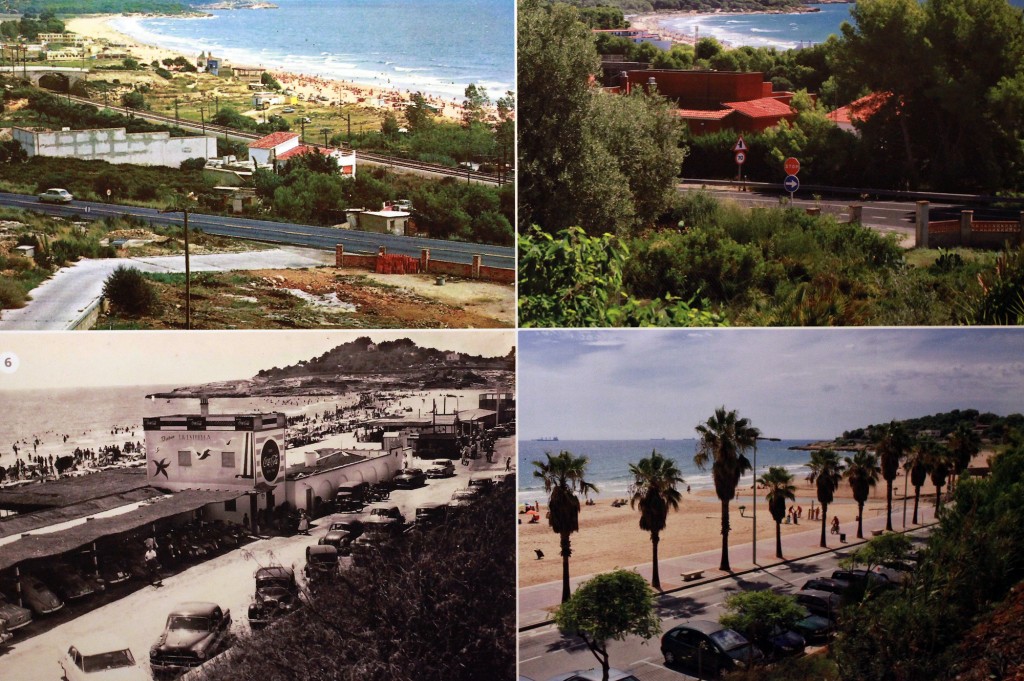
Tarragona homes the exhibition “Les platges de Tarragona, 50 anys després. Dues mirades: Ramon Segú Chinchilla i Rafael López Monné” (Tarragona beaches: 50 years later. Two versions: Ramon Segú Chinchilla & Rafael López Monné), which is available in L’Arxiu, area M2 in Espai Tabacalera –after having spent some time in Espai Turisme– until the end of April.
This new location has been extended with five glass cabinets, providing the showing with a new dimension. Items exhibited are from the Centre d’Imatges de Tarragona and the Biblioteca Hemeroteca Municipal. From the former, we can see the camera Ramon Segú Chincilla pictured the coastline of Tarragona in the 60s, as well as a photo album with postcards showing various points located along the coast.
The rest of display cases provide visitors with a journey throughout the publications of that period –50 years ago–, which help people know more about the city, by means of guidebooks, monographic magazines and special issues of various journals or brochures tourists would be given when looking for information.
We’ve dedicated a special location for those books edited in the 60s that talk about the city and the entire Tarragona region. In short, these are travel guides that talk about the monuments, weather conditions and beaches of the Tarragona coastline at length.
On a second section, we find the monographic issues a number of national journals wrote after Tarragona. Among these, we find La Vanguardia, Mundo Ilustrado, Diario de Barcelona, Blanco y Negro, and issues dedicated to Tarragona in collections such as ¡España, qué Hermosa que eres! edited by Editorial Mateu. Issues like Tarragona, centro de la cadena turística más importante de Europa or Una vibrante ciudad moderna frente al mar de siempre, were packed with beautiful illustrations.
The third section is dedicated to tourist publications edited 50 years ago. Ajuntament de Tarragona and Sindicat d’Iniciativa i Turisme were in charge of publicizing the city via diptychs or leaflets about Roman monuments, the Cathedral and various routes round the city. We also find information about Costa Daurada and its fine golden sand beaches. These were published in a number of languages, as the number of tourists was increasing year after year, and so the tourist office was getting more and more visitors.
Most part of the printed material exhibited comes from the Biblioteca private collection, which now provides us with a wider vision of our recent history. These are collections by Carles Babot, Enric Baixeras and Jordi Morant. And it’s thanks to them that we can now learn more about the concept of tourism in Tarragona.
M. Elena Virgili Bertran
Biblioteca Hemeroteca Municipal de Tarragona
Translation: Artur Santos (@ArturVilaniu on Twitter)



